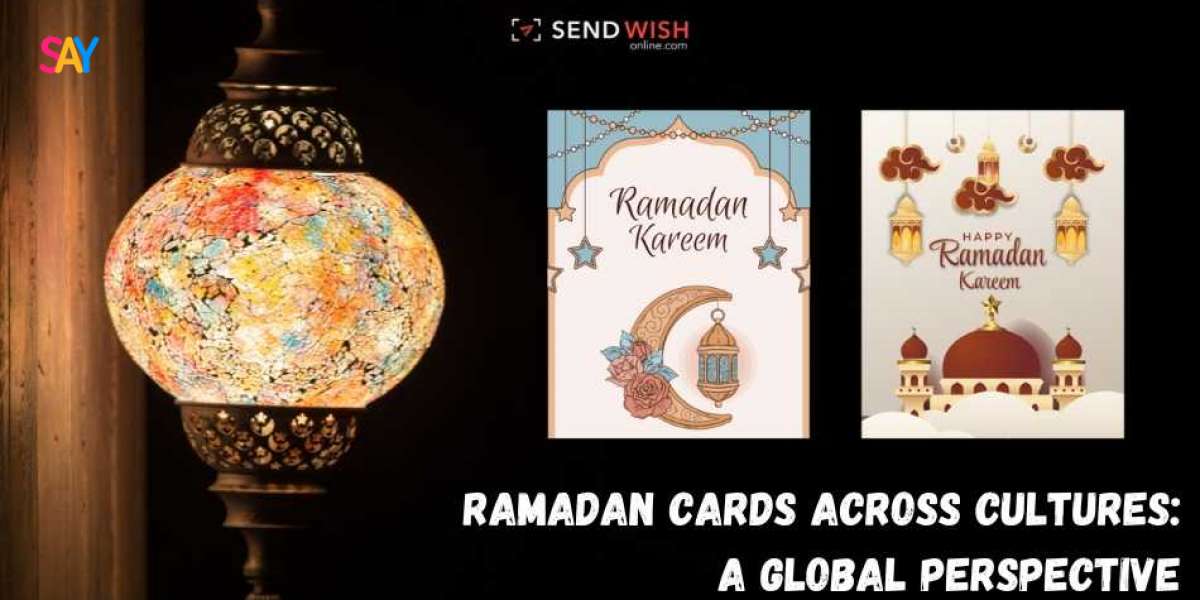Introduction:
Ramadan, the holy month of fasting and spiritual reflection for Muslims around the world, is a time of immense joy and celebration. As the month approaches, Muslims engage in various practices to express their love, gratitude, and well-wishes to their friends, family, and community members. One such practice that has gained popularity in recent years is the exchange of Ramadan cards. These beautifully designed cards serve as a means of conveying warm wishes, strengthening bonds, and spreading the spirit of Ramadan. In this article, we will explore the significance and role of Ramadan cards in celebratory practices.
Historical Context:
The tradition of exchanging greeting cards has a long-standing history in human culture. It is believed to have originated in ancient China, where messages of goodwill were exchanged on ornate pieces of paper. The practice soon spread to the Western world and gained widespread popularity during the 19th century. Over time, greeting cards became an integral part of various festivities and celebrations, including religious occasions.
Significance of Ramadan Cards:
Expressing Good Wishes: Ramadan cards provide a platform for Muslims to express their heartfelt wishes for a blessed and fulfilling month of fasting to their loved ones. These cards often feature beautiful calligraphy, intricate designs, and meaningful messages that convey prayers for spiritual growth, peace, and prosperity.
Strengthening Bonds: Ramadan is a time when families and communities come together to observe the fast, share meals, and engage in acts of charity. Exchanging Ramadan cards is a way to strengthen these bonds further. The act of selecting, personalizing, and sending cards demonstrates thoughtfulness and care, fostering a sense of unity among individuals.
Spreading the Spirit of Ramadan: Ramadan cards have the power to transcend physical distances. They can be sent to friends and family members who are far away, reminding them of the shared values and the special significance of the holy month. By exchanging cards, Muslims can spread the spirit of Ramadan beyond their immediate surroundings, reaching individuals who may not have experienced it before.
Encouraging Reflection and Gratitude: The act of designing or selecting a Ramadan card often involves contemplation and reflection. It provides an opportunity for individuals to pause, express gratitude for the blessings of Ramadan, and contemplate the spiritual significance of the month. Similarly, receiving a card prompts recipients to reflect on their own spiritual journey and embrace the essence of Ramadan.
Promoting Acts of Kindness and Charity: Many Ramadan cards feature verses from the Quran or quotes from Islamic scholars that emphasize the importance of acts of kindness, charity, and empathy. By sending these cards, individuals encourage recipients to engage in charitable deeds, extend a helping hand to those in need, and contribute to the betterment of society.
Visit to:- Thank you ecards
Cultural Diversity: Ramadan cards come in a wide variety of designs and styles, reflecting the rich cultural diversity within the Muslim community. From traditional motifs and Arabic calligraphy to contemporary designs, these cards capture the essence of different Islamic cultures and traditions. This diversity allows individuals to choose cards that resonate with their personal and cultural identities, making the exchange of Ramadan cards a deeply meaningful and inclusive practice.
Educational Tool: Ramadan cards can also serve as an educational tool, particularly for young children. Many cards feature illustrations or messages that explain the significance of Ramadan, its rituals, and the values associated with the holy month. By exchanging these cards, parents and educators can introduce important concepts related to fasting, prayer, charity, and community to the younger generation, fostering their understanding and appreciation of Islamic traditions.
Creative Expression: Designing or creating handmade Ramadan cards can be a creative outlet for individuals. It allows them to express their artistic talents, experiment with different materials, and personalize their messages. Handmade cards carry an added sense of thoughtfulness and effort, making them cherished keepsakes for the recipients. This creative expression adds an extra layer of depth and meaning to the act of exchanging Ramadan cards.
Bridge-building: Ramadan cards have the potential to foster interfaith and intercultural dialogue. Muslims often send these cards to their non-Muslim friends, neighbors, and colleagues as a way to share their traditions and promote understanding. By extending greetings and well-wishes, Ramadan cards serve as a bridge between different communities, fostering respect, tolerance, and friendship.
Digital Era Adaptation: With the advent of digital technology and social media, the exchange of Ramadan cards has expanded to the online realm. Digital Ramadan cards, shared through email, messaging apps, or social media platforms, allow for quick and convenient communication. They enable individuals to connect with a larger network of friends, family, and acquaintances, spreading the joy and blessings of Ramadan across borders and time zones.
Environmental Considerations: In recent years, there has been a growing awareness of the environmental impact of paper waste. As a result, individuals are increasingly opting for electronic or eco-friendly alternatives to traditional paper cards. Electronic Ramadan cards, in the form of e-cards or digital animations, significantly reduce paper consumption and waste. This shift towards sustainability aligns with the Islamic principle of environmental stewardship and encourages responsible consumption during the holy month.
Conclusion:
ramadan greeting cards have emerged as a significant aspect of celebratory practices during the holy month. They serve as a means of conveying warm wishes, strengthening bonds, and spreading the spirit of Ramadan to a wider audience. These cards offer an opportunity for reflection, gratitude, and acts of kindness. As technology advances, digital Ramadan cards have also become popular, allowing for quick and widespread communication. However, the essence of the tradition remains the same — to foster connections, promote piety, and celebrate the blessings of Ramadan.




